We like to think we’re rational people making rational decisions.
We pore over the data in our analytics dashboards, looking for trends among our customers. We carefully weigh the pros and cons of our own purchase decisions, arriving neatly at a logical choice.
Right? Wrong.
The truth is that thehuman brain is incredibly complex, contextual and emotional. There are dozens and dozens of cognitive biases, for example, influencing every decision you and your customers make.

Free Reading List: Conversion Optimization for Beginners
Turn more website visitors into customers by getting a crash course in conversion optimization. Access our free, curated list of high-impact articles below.
Get our Conversion Optimization reading list delivered right to your inbox.
Almost there: please enter your email below to gain instant access.
We'll also send you updates on new educational guides and success stories from the Shopify newsletter. We hate SPAM and promise to keep your email address safe.
Here’s everything you need to know about some of the most common biases (and how to use them to your advantage).
First, what is a cognitive bias?
A cognitive bias is atendency to think a certain way, even if it is not the most rational or logical way of thinking.
We all suffer from multiple cognitive biases, often simultaneously.
In fact, the very thought that you are less affected by cognitive biases than other peopleisa cognitive bias itself. It’s called the bias blind spot, a tricky little bias that makes it easier for you to detect biases in others (vs. yourself).
Ok, whatever. Why do cognitive biases matter, anyway?
Because the more you understand the inner workings of the human brain, the better you can market to and persuade potential customers. By just beingawareof the cognitive biases in your mind and the minds of your visitors, you can tap into an irrefutable sales machine.
13 Cognitive Biases You Can Use
There are new cognitive biases being added to “the list” every day. Like when Barney fromHow Met Your Mothercoined “the cheerleader effect”. That is, the bias that makes us think individuals are more attractive when in a group.
But here are some basics mixed with a few “unfamiliar faces” to get you up to speed quickly.
Decision-making, belief and behavioral biases
These are some of the many biases that impact: the formation of beliefs, business and economic decisions, and human behavior in general.
1. Availability heuristic
The tendency to overestimate the likelihood of events with greater "availability" in memory, which can be influenced by how recent the memories are or how unusual or emotionally charged they may be.
The availability heuristic is a mental shortcut that relies on recent memory. If something can be recalled quickly, it must be important or, at least, more important than things that are not easily recalled.
According to this cognitive bias, use recent information to make decisions, making new opinions biased towards the latest news.
For example, after hearing about a string of burglaries on the news, you might be extra cautious about locking the doors at night.
How it applies to ecommerce:Use what’s happening in the world and on the news to sell more. For example, on the heels of Hillary’s loss in November, the Women’s March in January and International Women’s Day in March,Cards Against Humanity released a “For Her” versionof the game:
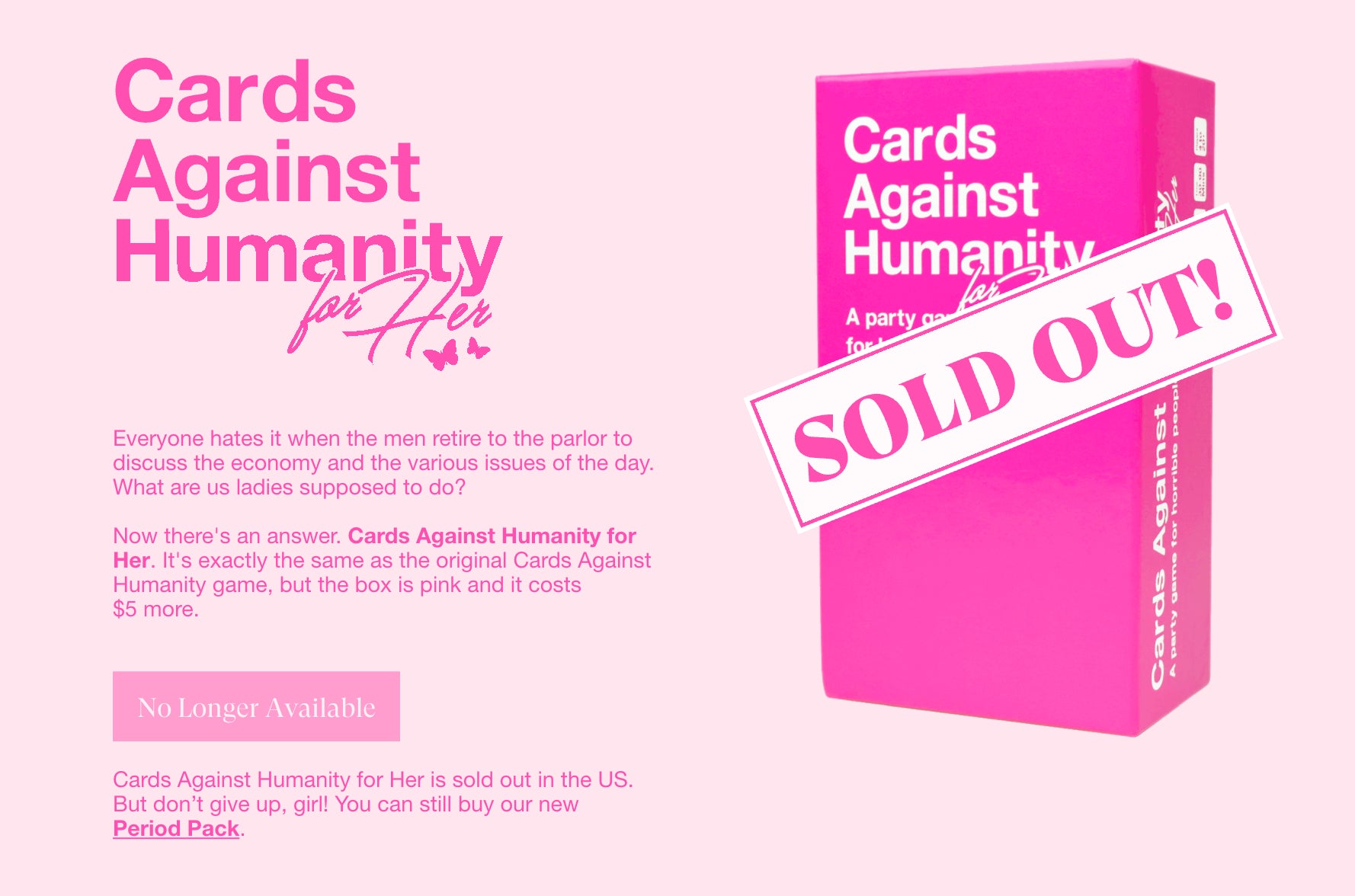
The entire landing page highlights sexism, starting with the fact that it’s the same game in pink packaging, but it cost $5 more.
2. Backfire effect
The reaction to disconfirming evidence by strengthening one's previous beliefs.
This is also known as confirmation bias. Essentially, when people are provided with cold, hard evidence against their beliefs, they often reject the evidence and believe even more strongly in their original position.
In addition, we have the tendency to search for, interpret, favor and recall information in a way that confirms our preexisting beliefs.
Anyone who has had a heated debate about politics or religion, for example, might recognize this cognitive bias.
People believe what they believe and it’s very difficult to unseat those beliefs.
How it applies to ecommerce:Do the research to really understand what those long-held beliefs are for your audience and focus on emotional appeals to change them. For example, there’s a rising number of climate-change deniers coming forward right now. If they were to land on theWWF store, they would be met with an emotional appeal to save animals affected by climate change:
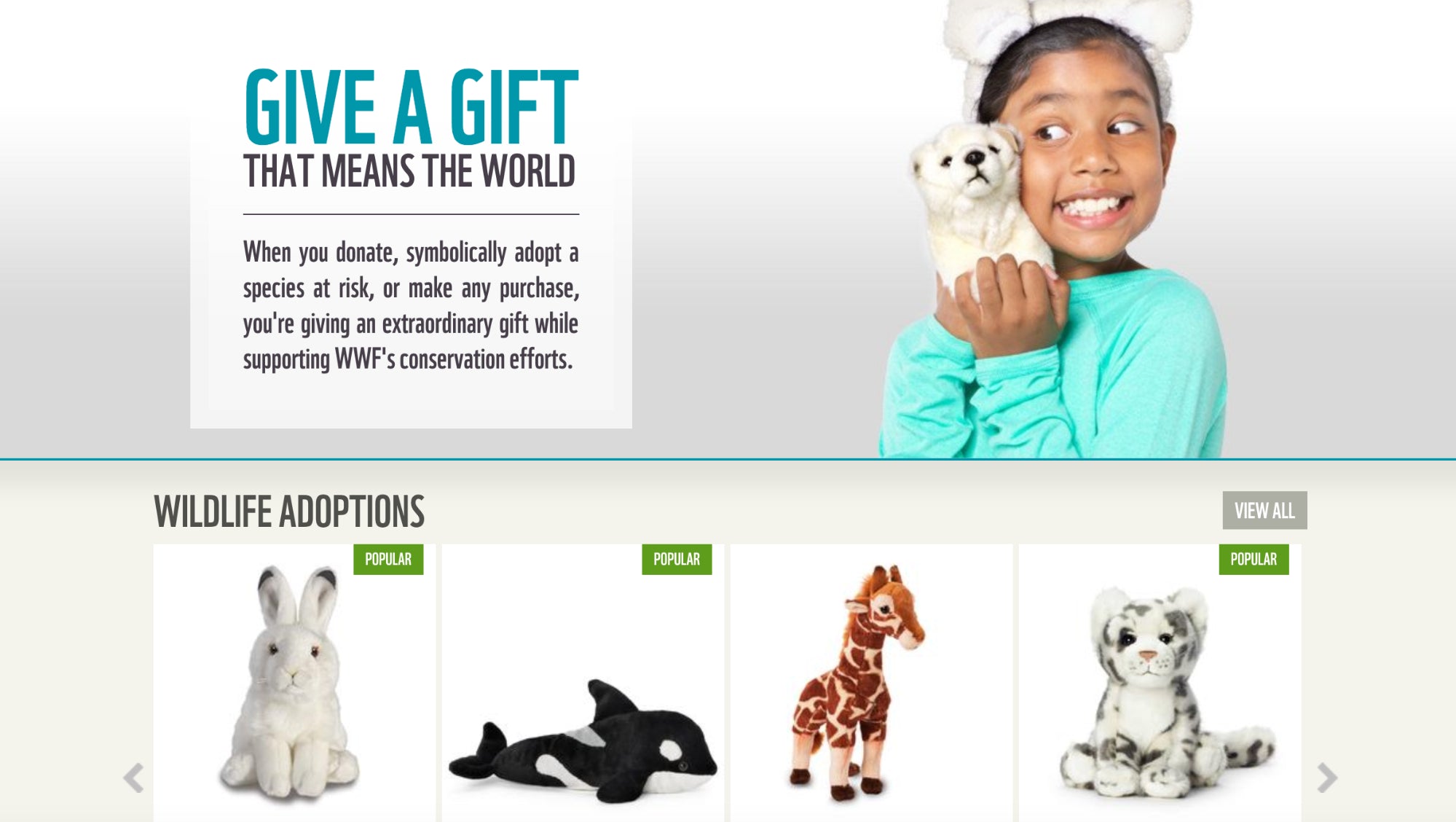
This is much more effective and persuasive than, say, a list of facts proving climate change exists.
3. Barnum effect
The observation that individuals will give high accuracy ratings to descriptions of their personality that supposedly are tailored specifically for them, but are in fact vague and general enough to apply to a wide range of people.
This explains how horoscopes, fortune telling and personality tests can seemsoaccurate.
This cognitive bias gets its name from American circus entertainer, P.T. Barnum. He is said to have once said, “There’s a sucker born every minute.”
How it applies to ecommerce:You can make visitors feel like you’re talking to them 1-on-1, even though you’re speaking to thousands. All it takes is some voice of customer research. For example, anyone who feels they work hard will find thisTangerinecommercial extremely relatable, as though it’s speaking right to them:
4. Ben Franklin effect
A person who has performed a favor for someone is more likely to do another favor for that person than they would be if they had received a favor from that person.
Wait, what? The proposed reason for this psychological phenomenon is that you performed the favor because you like the person.
这实际上是解释的认知偏见long-held grudges and rivalries because the opposite is true as well: you come to hate those you do wrong.
Ben Franklin quoted an “old maxim” in his autobiography, which is how the bias became named after him: “He that has done you a kindness will be more ready to do you another, than he whom you yourself have obliged.”
How it applies to ecommerce:Get a small commitment, financial or otherwise, out of visitors and then ask for a larger commitment later on. For example,Ghostlyencourages the small commitment of $0.99 for a single song:

After someone has, quite literally, bought into the smaller commitment, they’re much more likely to buy into the larger commitment (i.e. buying the entire album).
5. Decoy effect
Preferences for either option A or B change in favor of option B when option C is presented, which is similar to option B but in no way better.
In other words, options C is completely inferior to A, but on par with B (inferior in some ways, superior in some ways). When C is present, it makes A more attractive than if the options were merely A and B.
For example, let’s say you’re buying a new iPhone, right? Option A is $500 for 30GB and option B is $400 for 20GB. Some of you reading this will prefer A, some B. It just depends on how you feel about price and storage.
But now Apple has released another option, option C. At $550, it’s more expensive than both A and B, but has slightly less storage (25GB vs. 30GB) than A.
没有人会选择C,但它会导致chosen more often than if only A and B were present.
How it applies to ecommerce:Add a third bundle as a decoy to increase purchases of the bundleyou actually want people to buy. For example, check out howVirgin Mobilemakes the iPhone 7 with 128GB look more appealing than the iPhone 6 Plus with 32GB using the decoy (iPhone 7 Plus with 32GB):
6. Framing effect
Drawing different conclusions from the same information, depending on how that information is presented.
This cognitive bias states that people react to a choice in different ways, depending on how it’s presented (i.e. framed). For example, it could be framed as a loss or as a gain. We tend to avoid risk when a positive frame is presented, but seek risk when a negative frame is presented.
Amos Tversky and Daniel Kahnemanput this to the testback in 1981. Participants were asked to choose between two treatments for 600 people infected with a deadly disease. Treatment A would result in 400 deaths. Treatment B had a 33% chance that no one would die, but a 66% chance that everyone would die.
Each treatment was presented in a positive and negative frame. For example, for treatment A:
- Positive: Save 200 lives.
- Negative: 400 people will die.
Treatment A was chosen by 72% of participants when framed positively, dropping to only 22% when framed negatively.
How it applies to ecommerce:Be careful about how youpresent the value of your products. More often than not, you’ll want to use a positive frame, but sometimes a negative frame can be persuasive, too. For example,Leesauses a lighthearted negative frame really well:

7.双曲线贴现
Discounting is the tendency for people to have a stronger preference for more immediate payoffs relative to later payoffs.
Given two similar rewards, we show a preference for the one that arrives sooner. Our brains actually discount the value of the reward that arrives later.
When asked if they would prefer a dollar today or three dollars tomorrow, a significant amount of people will take the lesser amount today. When asked if they would prefer a dollar in a year or three dollars in a year and a day, a significant amount of people are happy to wait for the three dollars.
This is known as present-biased.
Basically, hyperbolic discounting creates temporary preference for small rewards now over large rewards later.
How it applies to ecommerce:Always offer speedy shipping options, even if they cost more. Also, use limited-time offers to activate that present-bias. For example,Bob & Lushoffer free, next day delivery if you order before 4 p.m.:

8. Post-purchase rationalization
The tendency to persuade oneself through rational argument that a purchase was good value.
This is also known as choice-supportive bias.
We want to make the right choice so much that we tend to retroactively assign positive attributes to an option we’ve selected.
For example, if you choose option A over option B, you are likely to downplay the faults of option A and highlight the faults of option B. You are likely to highlight the advantages of option A and downplay the advantages of option B as well.
How it applies to ecommerce:Most people feel buyer’s remorse “often” or “sometimes”. Post-purchase rationalization kicks in to help get rid of that remorse. Use position post-purchase language in confirmation pages and emails. For example, Tait Ischia sends this email when youbuy her copywriting book:

A nice “congratulations” style opening to confirm the customer made the right decision followed by frequently asked questions to set their mind at ease.
9. Rhyme as reason effect
Rhyming statements are perceived as more truthful.
We’re all familiar with the famous line from the O.J. Simpson trial, right? “If the gloves don’t fit, then you must acquit.”
In experiments, people consistently judge variations of expressions that rhyme as more truthful. For example, “What sobriety conceals, alcohol reveals” was judged as more truthful than “What sobriety conceals, alcohol unmasks.”
Likely, this is because rhymes are easier to process.
How it applies to ecommerce:Use rhyme where you can, whether that’s inproduct descriptions, product titles, on-site banners, etc. For example,BarkBoxuses rhyme to reinforce trust in the quality of items within each monthly shipment:
Social biases
10. Halo effect
The tendency for a person's positive or negative traits to ‘spill over’ from one personality area to another in others' perceptions of them.
This cognitive bias explains why customers develop bias toward certain products because of positive experiences with other products made by the same company.
For example, you might buy an Apple Watch despite a disinterest in watches because of positive experiences with your iPhone and MacBook.
You might also be familiar with this concept applied to physical appearance. It’s the same reason we tend to consider people we see as physically attractive to be smart, charming, selfless, etc.
The devil effect is the opposite of the halo effect. It’s when people allow an undesirable trait or experience to influence their evaluation and decision.
How it applies to ecommerce:Audit your store’s traits and figure out what your strongest suit is. Maybe you have a great personality, maybe you produced a similar product in the past that people loved, etc. Highlight whatever that positive trait might be to create a halo around your current product. For example,Chubbieshas a big, relatable personality that creates a halo effect on their shorts:
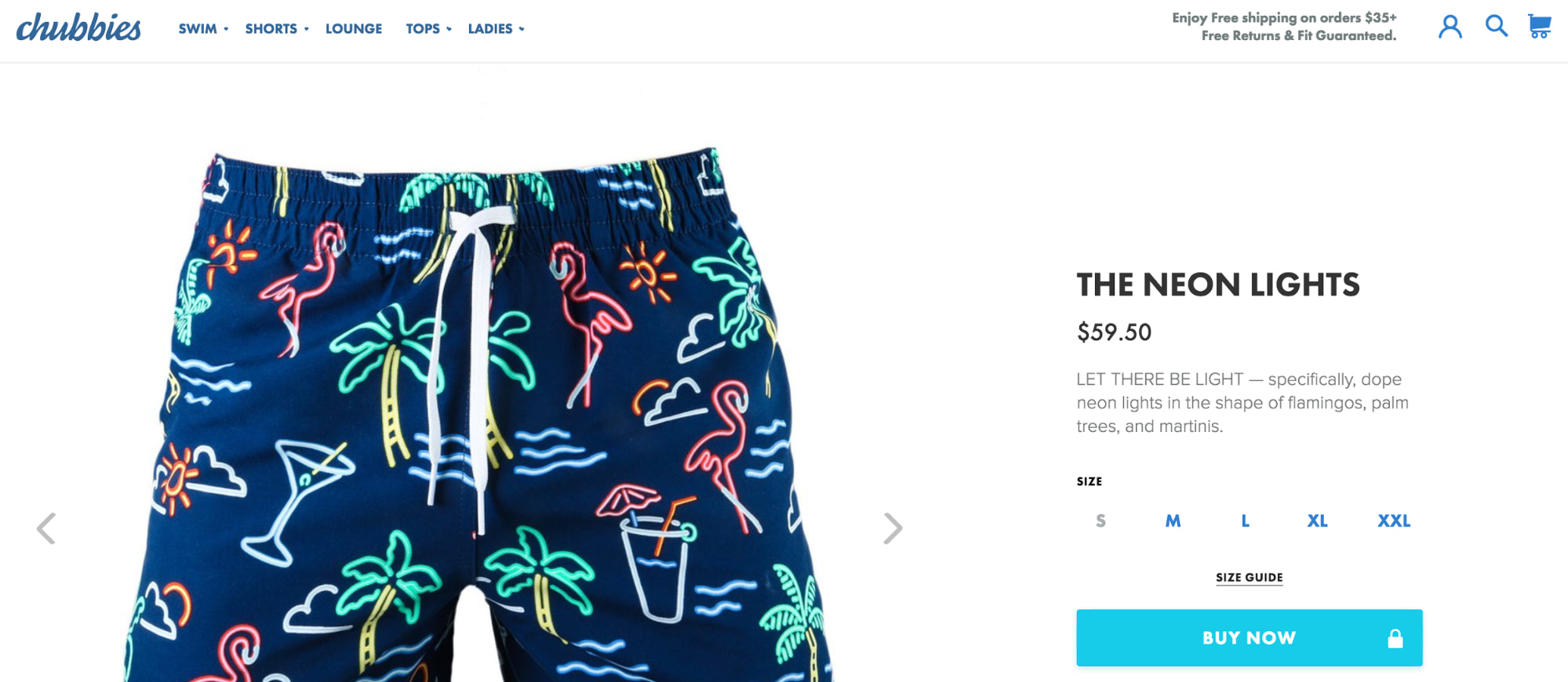
11. Ingroup bias
The tendency for people to give preferential treatment to others they perceive to be members of their own groups.
These groups can be formed based on trivial, observable traits (e.g. having tattoos) and meaningful, hidden traits (e.g. political views).
This cognitive bias has been kicking around since 1906 when William Sumner, a sociologist, suggested that humans are a species joined together in groups by nature. He also stated that humans have an innate tendency to favor their own group over others.
How it applies to ecommerce:你的商店必须符合你3月keting to. You need to walk, talk and act like your target demographic. For example, here’s howDeath Wish Coffeespeaks their audience’s language:
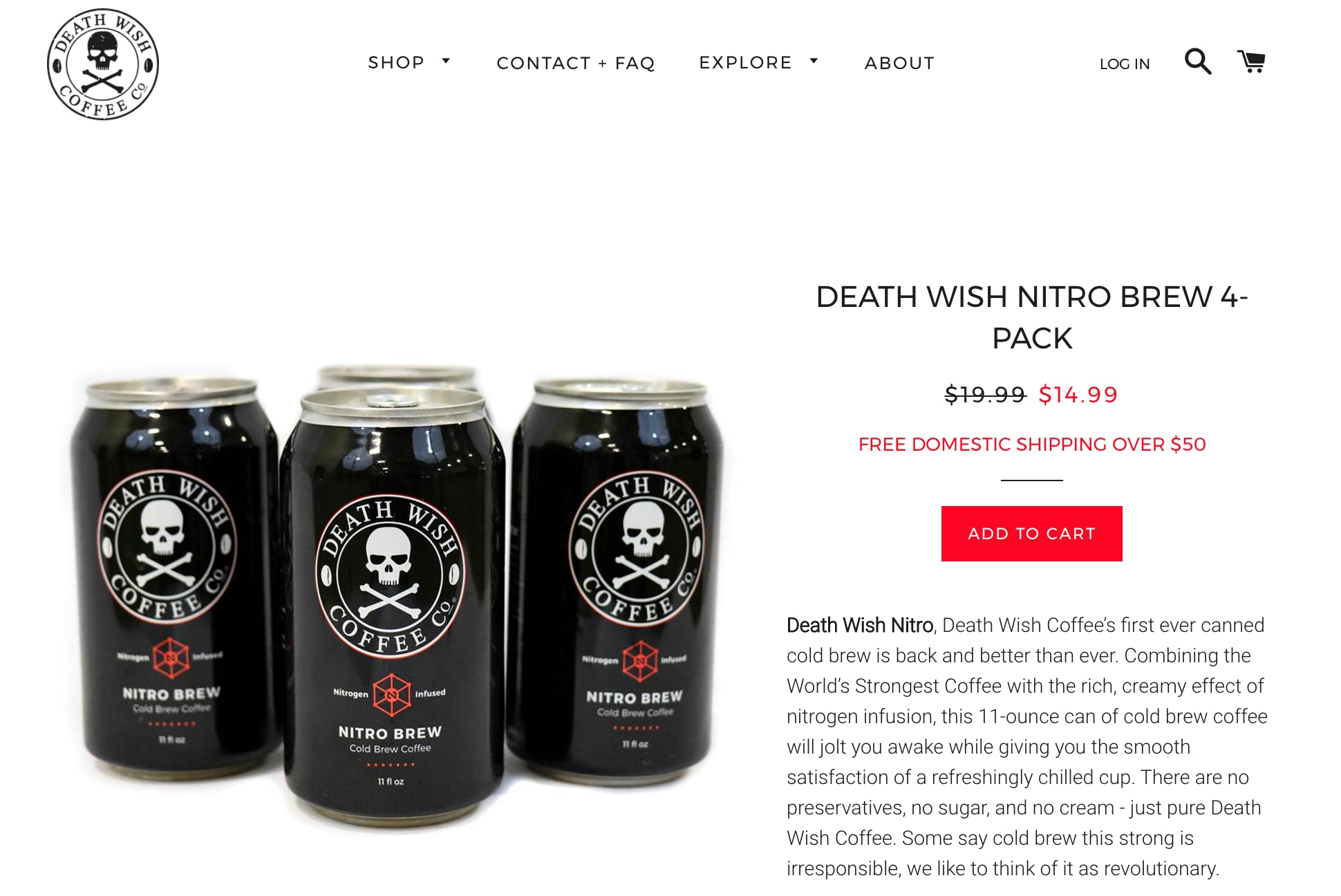
Memory biases
These are some of the many cognitive biases that either improve or impair the recall of a memory. This can refer to the ability to recall the memory altogether or simply the amount of time it takes for the memory to be recalled.
12.幽默很t
That humorous items are more easily remembered than non-humorous ones, which might be explained by the distinctiveness of humor, the increased cognitive processing time to understand the humor, or theemotional arousalcaused by the humor.
If you can make someone laugh, you can make them remember you.
- “The funniest thing happened to me yesterday.”
- “There’s this hilarious car commercial on TV.”
- “You’ll never guess what my 2-year-old blurted out at the grocery store.”
Not only are we likely to recall funny memories, but we’re likely to share them as well. Why? Likely for a few different reasons:
- The element of surprise.
- Humor distracts the brain from the fact that it’s being sold to.
- Laughing makes us pretty freakin’ happy.
Perhaps that’s why 20% of all ads and 50% of TV ads are based on humor.
How it applies to ecommerce:If it feels authentic (no one wants to force humor where it doesn’t belong), add some humor to your store. For example,Poo-Pourridials up the funny on-site as well as in their (now) iconic YouTube videos:

13. Peak-end rule
That people seem to perceive not the sum of an experience but the average of how it was at its peak (e.g. pleasant or unpleasant) and how it ended.
This is the cognitive bias that disregards the total sum or average of the experience. Instead, it forces us to judge an experience based on how we felt at its peak (i.e. the most intense moment) and its end.
The rest of the information isn’t lost, it’s just… not used.
Kahneman and Ziv Carmonconducted a studyto explore the peak-end rule. They found that participants who were very dissatisfied during most of the experience, but were satisfied in the last few seconds described the experience as positive.
In an earlier study, Kahneman and a few other psychologists found that participants were willing to suffer longer in the name of the peak-end rule. Participants had two options:
- Submerge their hand in 14 degree water for 60 seconds.
- Submerge their hand in 14 degree water for 60 seconds plus an additional 30 seconds with the water temperature raised to 15 degrees.
Most people opted for option two. They would suffer longer, but the ending was more pleasant, creating a more positive memory.
How it applies to ecommerce:Your product arriving promptly and working as promised is your grand finale, so be sure you have invested in a quality product and vetted your shipping options. Your peak will likely be your checkout process, so make sure it’s as seamless as possible. Don’t ask for more information than you need, don’t require a login, allow the use of digital wallets, etc.Tattlygets it right, for example:
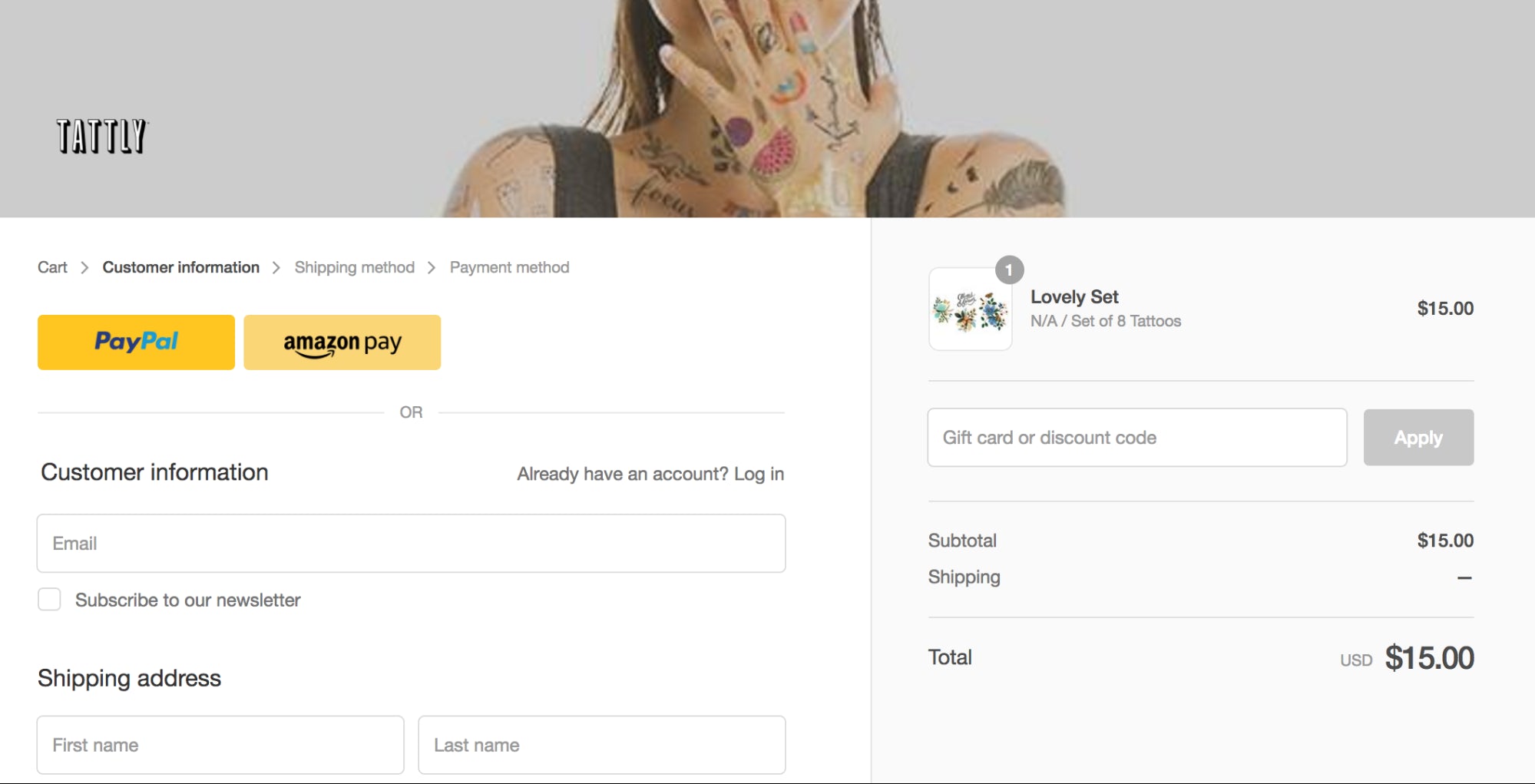
Conclusion
The reasons people buy and don’t buy are complex and contextual. That’s why allowing yourself to think about persuasion outside of the price and product box is liberating.
None of this is black and white, especially since we’re taking psychology online.
But even just being aware of some of the cognitive biases that are at play puts you in a good position. While all of your competitors are stuck appealing to logic and reason, you can start experimenting with themanyother forms of persuasion.


